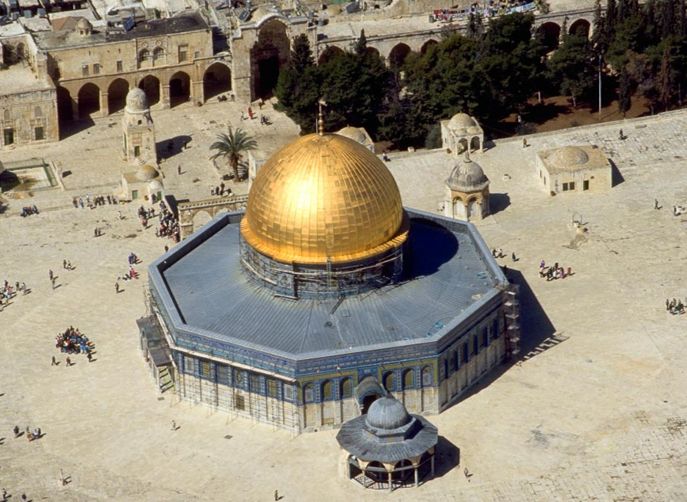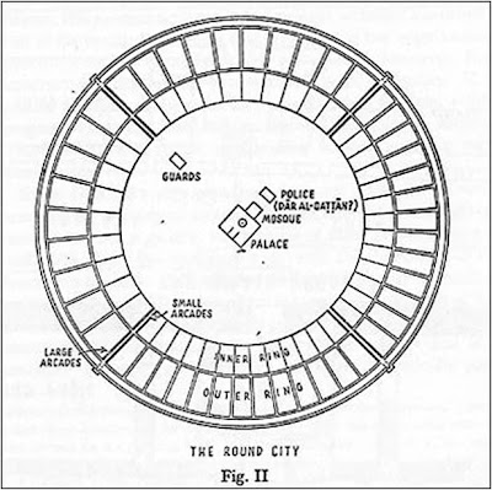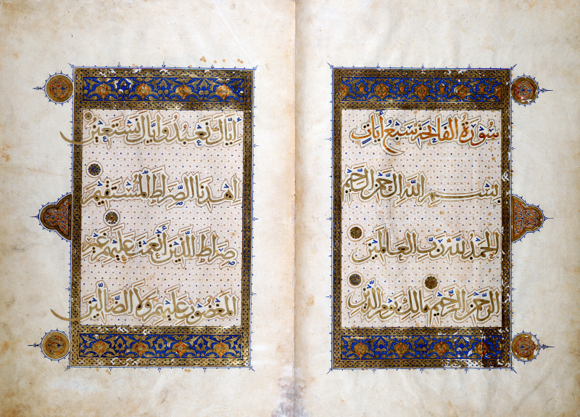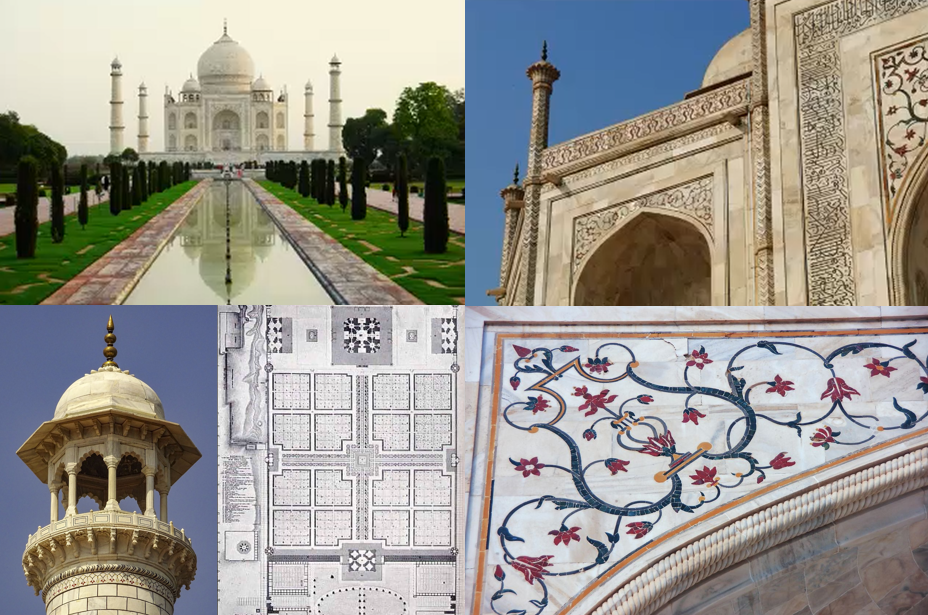Lecture 2: Faith and Power: An Introduction to Islamic Art
1/15
There's no tags or description
Looks like no tags are added yet.
Name | Mastery | Learn | Test | Matching | Spaced |
|---|
No study sessions yet.
16 Terms
Islamic lore: context in relation to Judaism & Christianity (3)
Youngest of 3 monotheistic religions
Traditions similarly trace back to the Prophet Abraham
BUT Islam sees itself as the ultimate confirmation of the primordial faith in the unity of God
Islamic lore: key dates (2)
622 CE: beginning of the Islamic calendar (AH 1)
Prophet Muhammad migrated to Medina
632 CE: Prophet Muhammad died, buried @ his house in Medina (2nd holy site in Islam)
Islamic lore: role of mankind (3)
Merely an instrument/servant of Allah
All equal
Should never:
(1) Assume the role of the Lord
(2) Attempt to seize & fixate the divine in human artefacts
Islamic lore: Prophet Muhammad (4)
Born 570 CE in Mecca
Last in the chain of prophets
Historically did exist
BUT NO illustrations/depictions as Muslims only believe in Allah as the sole idol
Seen as a human transmitter of the Qur’an
Was revealed to him in segments throughout his life
Memorised & recited during his lifetime, then fixed in writing immediately after his death
1st revelation in 610 CE from the archangel Gabriel:
‘Read […] in the name of your Lord […] Read: and your Lord is Most Generous, Who taught knowledge by the pen, taught man what he did not know.’
= explains significance of calligraphy & the written word
Islamic lore: core beliefs (3)
Allah is beyond the limited human capacities of imagination [transcendant]
Nothing material should be directly associated w/ the idea of God
To preserve his purity
BUT Allah is omnipresent/inherent within his creation [immanent]
Percievable by virtue of symbolism & analogy
Close interactions, yet clear distinctions between 2 levels of existence
Human/temporal realm vs. Divine/timeless realm
Both worlds are cut from the same cloth: while God is unique, His creation is too
BUT blurring the division = blasphemy
Islamic lore: key vocab
Qur’an
Sunna
Khalifa/Caliphs
Sultan
Ka’ba
Qur’an: the word of God
Sunna: habits (of the Prophet)
Khalifa/Caliphs: orthodox Islamic law; formed using (1) the Qur’an & (2) the Sunna
First 4 caliphs were ‘Rashidun’ (= rightly-guided caliphs): relatives/close companions of the Prophet Muhammad
Sultan: powerful tribal & military leaders
Ka’ba: literally ‘cube’; a stone building @ the centre of Islam’s most important mosque & holiest site (the Masjid al-Haram) in Mecca, Saudi Arabia
Misconceptions of Islamic Art (2)
‘Visual tradition in service of the Islamic religion’
NOT always
Figurative Islamic art frequently engages w/ the secular dimension of the Islamic world (e.g. in illustrating history/myths)
Orientalist, non-local ways of categorising Islamic art
Focus on geographical ‘centre’ of Islam (the Middle East), even though Islamic communities exist all over the world
E.g. S.E.A. has the highest concentration of practising Muslims
Islamic art as monolithic, uniform, & one-dimensional
Rarely takes into consideration the various local influences specific to different geographical regions
Reflects the complexities of Islam as a religion
Entanglements of Faith & Power (2)
Cultural fusion as a result of geographic expansion
After the death of the Prophet Muhammad, Islam underwent intense expansion (e.g. Byzantine Empire, Sicilian Empire)
Empires w/ rich existing artistic & cultural traditions
Synthesis & repurposing of existing resources (syncretism)
E.g. Dome of the Rock (691 CE), the Taj Mahal (1653)
Inherent mechanisms of ruling
Caliphs were BOTH spiritual & political leaders
E.g. rightful caliphs were ‘chosen’ by the Prophet Muhammad, or at the very least inextricably linked to him
E.g. the caliph did the sermon during Friday prayers (most important of weekly prayers for Muslims)
E.g. the City of Peace/Al-Mansur City (766 CE), the Qur’an of Sultan Baybars II (1306)
Stefano Bianca, ‘Basic principles of Islam and their social, spatial and artistic implications’ (2)
Architecture & urban form are a natural expression of prevailing spiritual values & beliefs
‘All spiritually-founded traditions aim at materialising their individual perception of universal truth’
Filtered through their own cultural conditions
This can be a result of:
(A) Conscious planning to ‘mirror’ the universe in man-made material structures (e.g. monumental works of art)
(B) A natural outcome as a result of traditions & daily practices which correspond to certain spiritual principles
Islam completely integrates religious practice in the daily life of the individual & society
Provides a matrix of behavioural archetypes = generates correlated physical patterns = moulds a whole way of life
= the religious & social universe of Islam is crucial to the analysis of Islamic architecture
Wendy Shaw, ‘What is Islamic Art? Between Religion and Perception’ (2)
The interpretation of Islamic art through Western European art-historical frameworks fails to bridge the gap of alterity.
Our existing frameworks of religion, art, & history often veil Islamic culture rather than revealing it
Problems:
(1) Teleological assumption
(2) Secular assumption (mid-18th century)
(3) Universalisation of Western European Christian values through art
(4) Dependence on periodisation & distinct civilisations
(5) Role of the Western Art Museum (19th century)
Our cultural backgrounds shape the ways we perceive & interpret art.
When art originates from an unfamiliar culture/time, we view it through the filter of what we already know
E.g. translating European pre-modern cultures using modern frameworks (the past)
E.g. translating other cultures using the Euronormative category of ‘Art’ (the other)
= the past & the other become blind spots of Art History
Wendy Shaw, ‘What is Islamic Art? Between Religion and Perception’: problems w/ Western Art-Historical frameworks (5)
Teleological assumption
Objects as necessary symbols of linear progress
Rather than focusing on how artists engage w/ contexts in the present tense
Secular assumption (mid-18th century)
Separates religion from lived reality
Obscures premises inherited from the hegemony of Western European Christianity
Universalisation of Western European Christian values through art
Art History developed in Western Europe just as Europe became a global, hegemonic power
Norms established under Western European Christianity have become naturalised (e.g. vocabulary of the image): reinscribing the Christian as ‘Western’
E.g. the repurposing of altarpieces as Art
Dependence on periodisation & distinct civilisations
Role of the Western Art Museum (19th century)
Sensory experiences of art reduced to sight
Rituals of respect (e.g. silence, circumambulation, meditations) perpetuate a sacrual aura in the episteme of knowledge > faith

Dome of the Rock, Jerusalem (691 AD)
Historical context
Built by the Umayyads (1st dynasty after the 1st 4 Rashiduns)
On temple mount (a sacred place for Jews)
Jerusalem was the original direction of prayer before Mecca (a sacred place for Muslims)
Description
Circular dome within an octagon
Centrally-planned (typical of Byzantine architecture)
Decorative mosaic spelling out the Islamic passage ‘God is One’ (typical of Byzantine art)
Surround the stone in an ambulatory manner
Very specific declaration in taking over this extremely important site w/ this proclamation [faith & power]
Adopts the shape of a martyrium
Same shape can be found across the Christian world as well (e.g. San Vitale)
Used to enshrine sacred relics
Holy Rock
Where Prophet Muhammad accomplished his heavenly Night Journey (mi’raj)
Interpretation
Even though it may have been built as a demonstrative anchor of Muslim values in Muslim-conquered Jerusalem, external cultural influences are still visible
Status today
Shared & contested by both Jews & Muslims [faith & power]

The City of Peace / Al-Mansur City (766 AD)
Historical context
Built by the Abbasid Caliph al-Mansur
Official residence of the Abbasid court
Original core of Baghdad (capital)
Description
Contained within walls
4 gates
Each oriented towards 4 important geographical regions of the Islamic empire
On the outer/inner rings lay the commercial & residential areas, and defensive outposts
In the centre lay:
(1) the caliphal palace
Centrality of political/spiritual authority
Able to survey everything at any given time
The exercise of power is administered, monitored, protected & articulated visually & symbolically
(2) the mosque
The wall of the palace coincides w/ the wall of the mosque (joint building)
= merging of spiritual & political authority, both exerted from the same position [faith & power]
(3) the headquarters for guards
(4) the famous library (‘House of Wisdom’)
Large empty space surrounding these buildings in the centre: purpose is unknown
Circular design
Directly took from traditional Persian Sasanian urban design
In an area that was dominated by the Sasanian dynasty before the advent of Islam
= repurposing of existing knowledge
Interpretation
Even though it may have been built to signal the advent of a new ruling power in Baghdad, external cultural influences are still visible
Visual metaphor for the Islamic system of political & spiritual authority
Centrality of political/spiritual authority
Merging of spiritual & political authority
Status today
Does not exist anymore

The Qur’an of Sultan Baybars II (1306 AD)
Historical context
The making of Qur’ans was one area where expenditure & artistic effort were not spared
Speaks of financial capability, power, & will of patrons
Was gifted to public institutions as a statement of presence/authority/legitimacy
Act of generosity/piety
‘The sultan is able to provide for the spiritual needs of the people’ [faith & power] ⭐
Description
Physically huge
Entirely written in gold
The Qur’an has ~6,300 verses
Immense expenditure in terms of material resources
Interpretation
Acts of piety as demonstrations of power [faith & power] ⭐
Patronage as a signifier of legitimacy/authority
Status today
In the British Library
Has been digitised for reading

The Baysunghur Shahnama (1430 AD)
Historical context
Book of Kings
An illustrated manuscript of the Shahnama, the national epic of Greater Iran (Persia)
A 60,000 rhyming couplets poem
Recounts the story of the Persian Kings, from the very beginnings up to the Arab conquests around 650 (real history)
Text was collated from a number of different sources in 1010 by an Iranian poet
Was a great trigger for artistic creativity
Commissioned by Timurid prince, Baysunghur Mirza
Was the younger son of the ruler of Iran; would not inherit the throne
Timurids were Mongols who came to rule (present-day) Iran
Islamic rulers, other than supporting the production of Qur’ans, sometimes also chose to support the production of poetry & literature
Esp. in areas where there were strong local indigenous literary traditions
Description
Self-insertions of Baysunghur
E.g. 2-page frontispiece shows a prince which is probably a portrait of Baysunghur
Set new precedeents for Shahnamehs
(1) Page size was unusually large
(2) Some pages depict unusual scenes/new ideas not shown in earlier Shahnameh versions
BUT their iconography & style pull from tradition
(3) Miniatures executed w/ bright colours & crisp lines that were revolutionary for the time
Interpretation
Presence of figuration in secular Islamic art (evidence of a visual tradition not always in service of the Islamic religion)
Was allowed because this book existed in the secular sphere (a retelling of history & myth)
Set a new precedent for royal manuscript commissions
Artistic influence as a tool to strengthen political influence
By reproducing the Shahnama, the Timurid dynasty signalled that they embraced Persian culture & traditions
YET in still differentiating their version of the Shahnama from prior versions (innovation), signalled the advent of a new, superior ruling power ⭐
Art as a tool to demonstrate power & influence
Of the new kingdom: this manuscript influenced the direction later royal commissions would take
Of its patron specifically, Baysunghur Mirza:
Purposeful selection of specific scenes
E.g. frontispiece portrait of himself, spread over 2 pages
Self-insertion into the Shahnama (a widely-known artistic & historical tradition)
Affirms his importance & elevated status
Positions himself as a successor of a long line of respected predecessors ⭐
DESPITE that Baysunghur Mirza wasn't a successor to his father's throne
Status today
In the museum of The Golestan Palace, in Tehran, Iran

The Taj Mahal (1653 AD)
Historical context
Lies on the right bank of the river Yamuna in Agra, Uttar Pradesh, India
Further East from the central Islamic lands
Commissioned in 1631 by the fifth Mughal emperor, Shah Jahan
To house the tomb of his beloved wife, Mumtaz Mahal, and (eventually) his own
Mughals were the last descendants of the Mongols (Timurids)
Description
Entire main structure is constructed of white marble
Only auxiliary buildings composed of red sandstone
Whereas most Mughal-era buildings tended to use:
Red stone for exteriors and functional architecture (such as military buildings and forts)
White marble for special inner spaces or for the tombs of holy men
May correspond with principles laid down in ancient Hindu texts
Red represented the color of the warrior class
White stood for purity and the priestly class
= represents the purity of the deceased & of love
Indo-Persian architectural fusion
Floorplan: Persian architecture
Centrally-planned
Quadripartite garden
Persian garden divided into 4 sections by walkways or water
Also symbolises 4 rivers in Islamic heaven/paradise
Symbolise the abundance of eternal life
Umbrella-shaped ornamental chhatris (smaller domes) atop the pavilions and minarets: local Indian architecture
= syncretism ⭐
Decorative calligraphy (Qur’an passages)
Speak of eternal life, Paradise, celebration of the deceased buried within
Engraved w/ decorative floral designs & semi-precious stones
Symbolised the verdant flora of the Paradise in which the deceased would find herself after her death
Employed Florentine artisans in 16th century Renaissance Italy
Pietra dura technique (“hard stone” in Italian)
A technique wherein precious and semi-precious stones are cut, polished and inlaid—generally on hard stone, such as marble—to represent an image
Interpretation
Proof of Islamic art evolving & acquiring local connotations
Status today
Exists & preserved